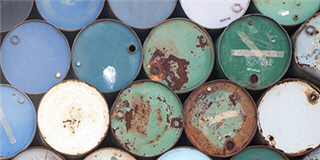Test NanoTrader Full I Test Tradingview I Test the mobile platforms All for CFD-Forex & Futures
You are here
What is crude oil and how do you trade it?

Crude oil, also known as black gold, is one of the most commonly traded commodities on the market. Discover everything you should know about crude oil and its uses before you take a position.
What is crude oil?
Crude oil is a liquid fossil fuel, formed from the remains of ancient organisms such as plants, algae and bacteria. Reserves of oil are found underneath landmasses and the ocean floor and can be extracted using large drills. Although crude oil is called ‘black gold’ it can actually vary in colour depending on how it’s distilled.
Crude oil is unrefined, so in its natural state is both a fuel and a base for other products. As oil is used throughout the economy – in sectors such as energy, transport and manufacturing – it is one of the most heavily-traded commodities both by hedgers and traders.
Crude oil is a non-renewable energy source, which means that once supply is depleted, it cannot be replaced. This is why the price of oil fluctuates so heavily, because as a finite resource its value is completely driven by supply and demand.
What is crude oil made of?
Crude oil is made of a mixture of hydrocarbons – that’s hydrogen and carbon atoms – which come from dead organisms that lived millions of years ago in a marine environment. The organisms absorbed the sun’s energy and stored it within their bodies as carbon molecules. Once they died, their remains would sink to the bottom of the sea or river bed to be buried in sand, mud and rock. After millions of years they’d be further buried under sediment and other organic materials, compressing them down. Eventually, the heat generated from this compression transforms the molecules into hydrocarbons which form crude oil.
What is the difference between crude oil and petroleum?
Crude oil and petroleum are often used interchangeably, but actually crude oil is a class of petroleum. Petroleum is just a broad term that encompasses both unrefined crude oil and petroleum products, which are made from refining crude oil and other fossil fuels such as coal, natural gas and biomass.
What are the uses of crude oil?
Crude oil is used to power transport, warm houses and manufacture nearly every product that we use. The uses of crude oil depend on how the raw commodity is refined and processed. Inside the distillation units, liquids and vapours will separate depending on their boiling points; these are then turned into different products.
- Low boiling point products. When crude oil is distilled at a lower boiling point, it creates gas products such as butane and gasoline, which are used in cigarette lighters and vehicle fuel respectively.
- Medium boiling point products. At slightly higher temperatures, crude oil is distilled into naphtha, which is used in dry-cleaning solvents, asphalt and rubber solvents, as well as jet fuel, diesel and heating oil.
- High boiling point products. At the highest temperatures, crude oil turns into heavy gas oil – which is used in industrial and mining products like iron ore, or to power cruise ships and tankers – and residual fuel oil, which is used in simple furnaces and industrial boilers
What moves the price of crude oil?
Crude oil prices are determined by supply and demand. As the global economy is so dependent on the commodity, any changes in the supply of oil can have huge consequences and even lead to political unrest. The main influences on the supply and demand of oil are:
- OPEC producers
- Non-OPEC producers
- Geopolitics and natural disasters
- Global economic health
- Renewable energy competition
- The US dollar
What are crude oil futures?
Crude oil futures are contracts in which buyers and sellers agree to deliver a set amount of crude oil at a set price on a given date in the future. Futures contracts are standardised, ensuring amount and quality of the product, which means that the market price of one type of oil can be used as a benchmark for other futures contracts around the world.
Are you looking for an award-winning futures broker recommended by professional traders?
Check-out broker WH SELFINVEST
WTI vs Brent crude oil
There are hundreds of variants of crude oil, but usually the term refers to West Texas Intermediary (WTI) and Brent crude, which are the two largest classes of crude oil on the market. All crude oil futures are priced according to these benchmarks.
WTI is a blend of oils processed across the US, mainly Texas, North Dakota and New Mexico. As WTI is drilled and refined in landlocked countries, it typically has higher transportation costs. In the US, WTI is the primary pricing benchmark but it’s a less common benchmark internationally. WTI is a lighter, sweeter oil.
Brent is drilled in the North Sea between the UK and Norway, as it’s by the sea it has far lower transportation costs than WTI but is more susceptible to fluctuations based on geopolitical events. It’s most commonly used for diesel fuel and gasoline. Brent is used as the benchmark for oils across Europe, the Middle East and Africa. Plus, the Organisation of the Petroleum Exporting Countries (OPEC) uses Brent crude as their pricing benchmark, which means it’s used to dictate oil budgets and policies throughout much of the world due to the sheer influence of the powerful exporters in the group.
People also read...
“Preventing mistakes from turning into disasters is to accept losses when they are small and then move on.”
- trader Marc Minvervini



